The atmosphere is a vital component of our planet, regulating our climate and weather patterns, as well as supporting life on Earth. The atmosphere is like a blanket of air around Earth. It has five layers, stacked on top of each other.
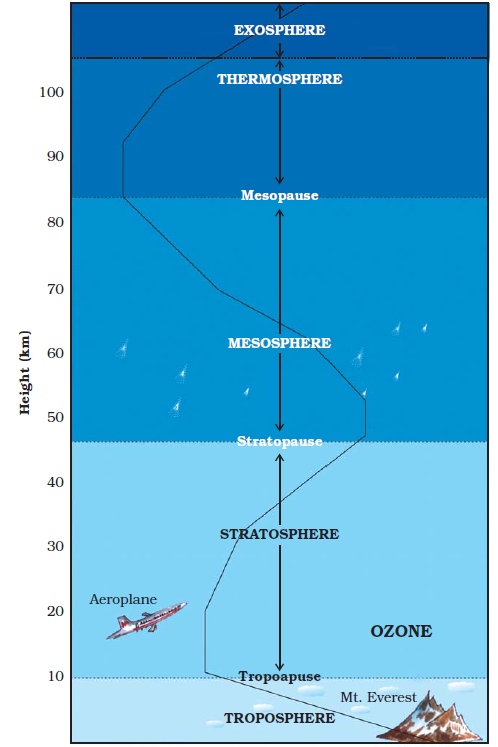
The Five Layers Are:
- Troposphere
- Stratosphere
- Mesosphere
- Ionosphere
- Exosphere
Table of Contents
Structure of the Atmosphere
The atmosphere can be divided into five primary layers, each with its unique characteristics and properties.
Troposphere
The lowest layer of the atmosphere, extending from the Earth’s surface up to an altitude of about 8-15 kilometers. It contains almost all of the Earth’s weather, as well as most of the atmospheric mass. The temperature of the troposphere decreases as altitude increases.
- It’s the lowest layer—closest to Earth’s surface
- It’s about 8 km thick at the poles and 18 km at the equator
- Temperature drops with height (1°C for every 165 meters)
- Clouds, water vapour, and dust are found only in this layer
- All weather happens here—like rain, snow, and storms
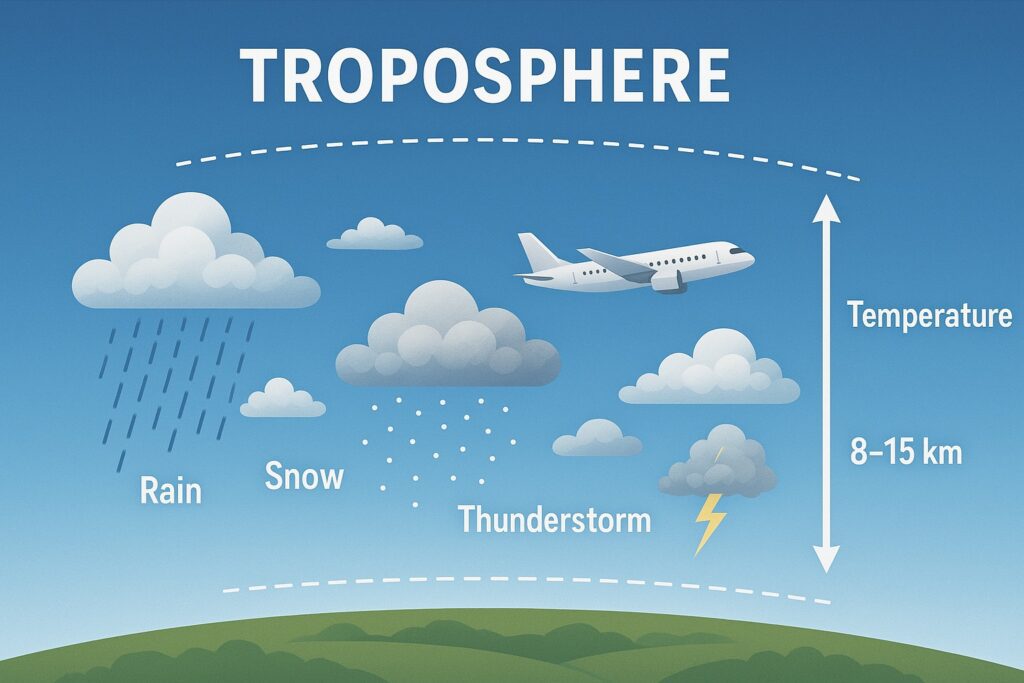
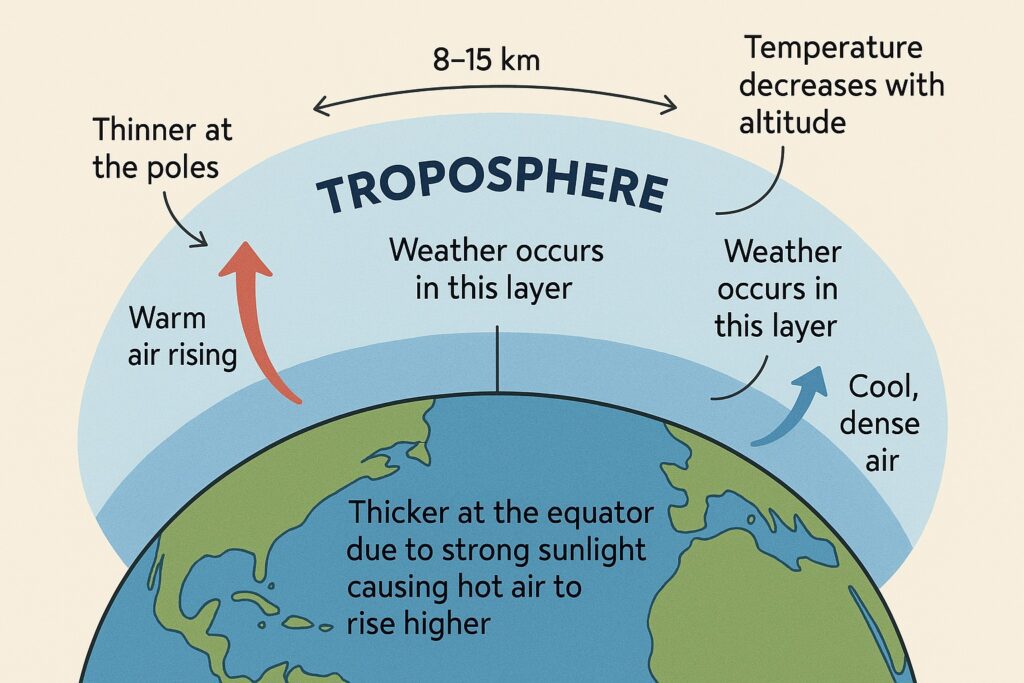
Stratosphere
Above the troposphere is the stratosphere, which extends from the top of the troposphere up to an altitude of around 50 kilometers. The stratosphere contains the ozone layer, which absorbs most of the sun’s harmful ultraviolet radiation. The temperature of the stratosphere increases with altitude due to the absorption of this radiation.
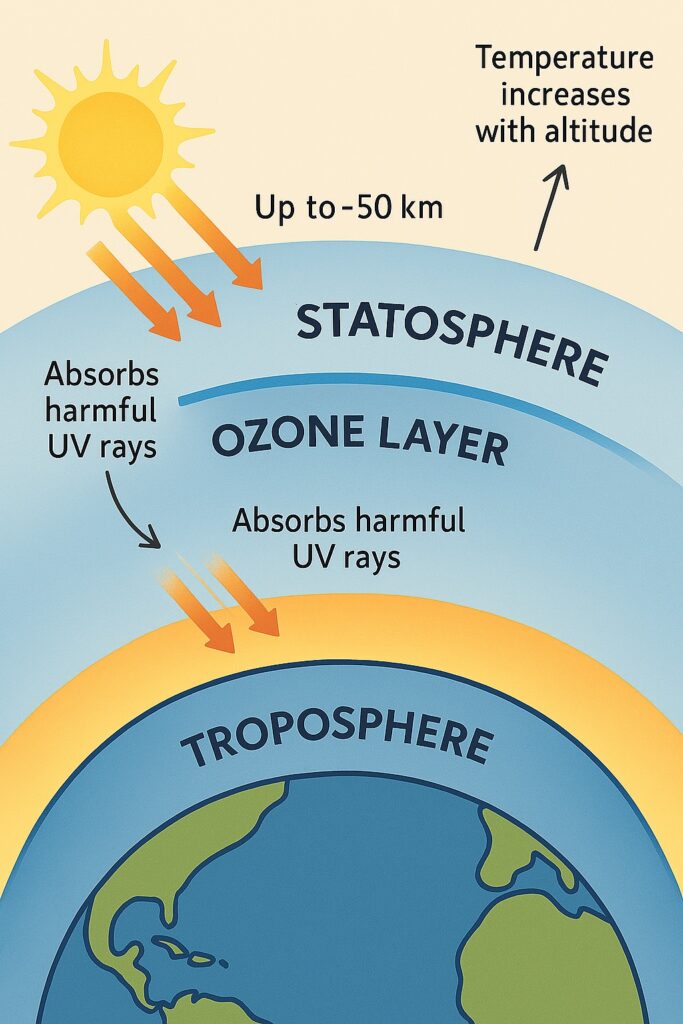
- This layer is just above the troposphere, separated by a thin boundary called the tropopause.
- Height: Starts around 18 km above the equator
- Temperature: Stays steady up to 20 km, then increases as you go higher
- Ozone Layer: Found in the upper stratosphere; it blocks harmful ultraviolet (UV) rays from the Sun. This is why temperature increases—it absorbs UV rays.
- Since there’s no weather here, it’s perfect for flying airplanes
Mesosphere
The layer above the stratosphere, extending up to an altitude of around 85 kilometers. The temperature of the mesosphere decreases as altitude increases.
- This is the third layer above the stratosphere
- Height: Reaches up to about 80 km above sea level
- Temperature: Gets very cold, dropping to around –100°C
- This layer helps burn up meteors before they reach Earth’s surface
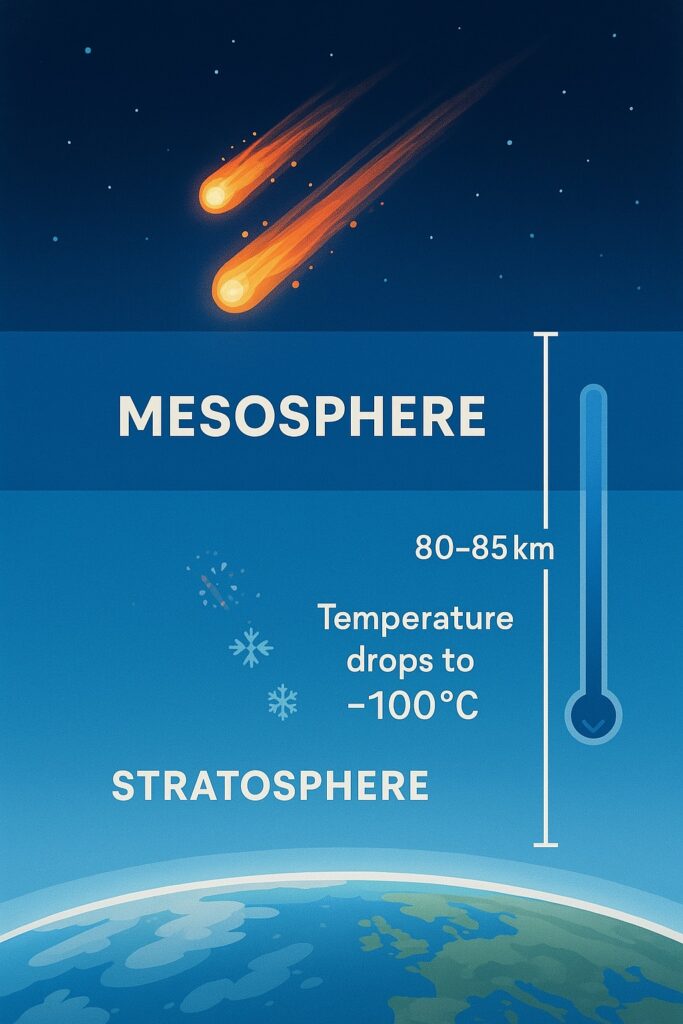
Ionosphere
- Found above the mesosphere
- This layer contains electrically charged particles (ions), which reflect radio waves and help in long-distance communication
- It also absorbs harmful X-rays and UV rays from the Sun
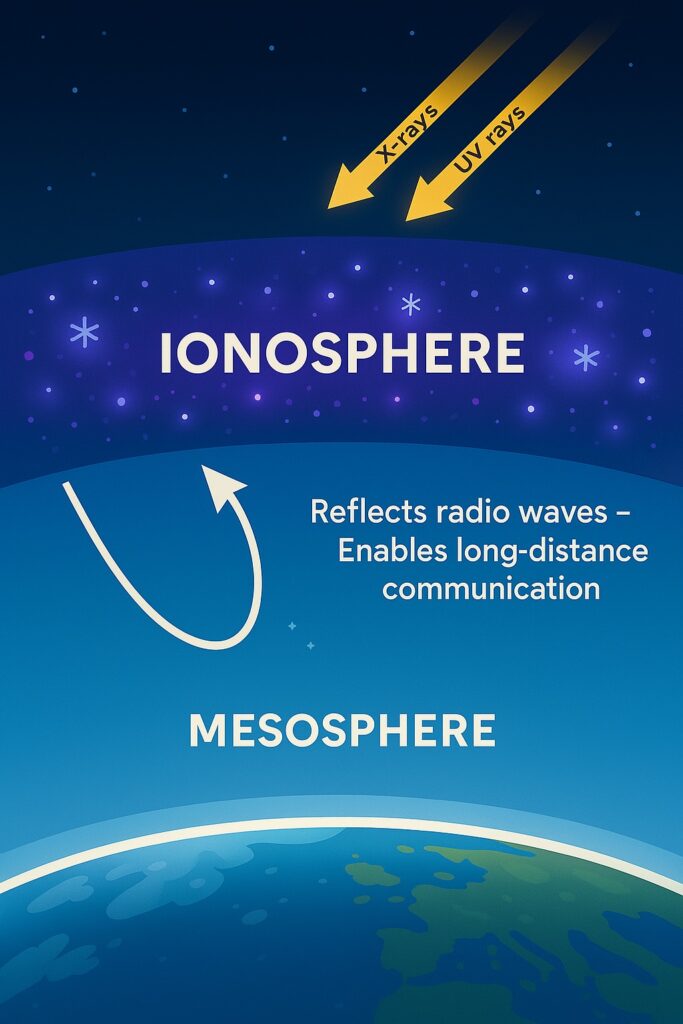
Exosphere
- This is the outermost layer of the atmosphere
- Very thin air, mostly hydrogen and helium
- Satellites orbit Earth in this layer
- There’s almost no air pressure here

Conclusion
In conclusion, the atmosphere is a complex system of gases and particles that plays a critical role in regulating our climate and supporting life on Earth. Its layers, from the troposphere to the exosphere, each have their unique characteristics and properties, while its composition is primarily composed of nitrogen and oxygen, with varying amounts of water vapor and trace gases. Understanding the structure of the atmosphere is essential for understanding how it influences our planet and how human activities can affect it.
Read: Geography Notes